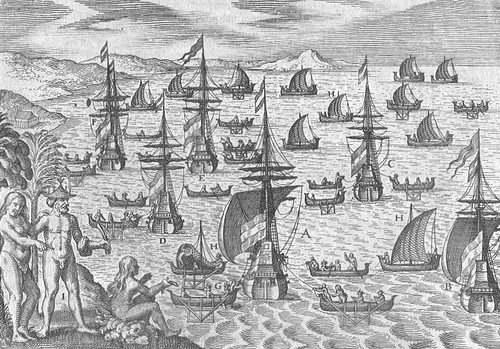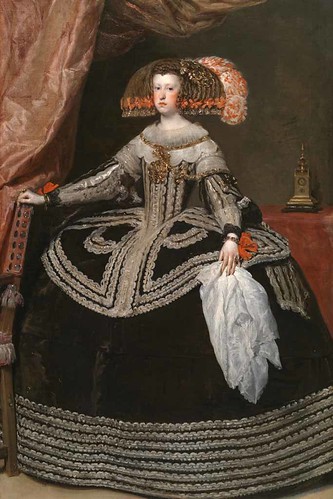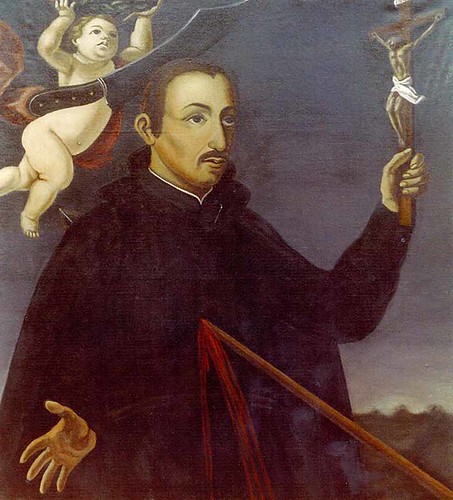Schools provided for change
The introduction of Spanish culture to the CHamoru/Chamorro people began with early Spanish visitors to the Marianas in 1500s. Spanish influence on the culture and language continued throughout the duration of the Spanish Era, which lasted from 1668 to 1898. When the Spanish first arrived, they discovered naked islanders who lived in small villages. The Spanish saw them as superstitious non-Christians who recognized chiefs as their leaders and, who in their opinion, were uncivilized and lacking proper religious and political practices. However, the Spanish also believed that the Chamorros possessed the potential to become more productive citizens within the constructs of a Westernized culture.
Style of dress
During the late 17th century when Jesuit priest Diego Luis de San Vitores established a mission in the village of Hagåtña, the main objectives of the Spanish were the Christianization and colonization of the region. Determined to introduce a more “civilized” appearance to the islanders, San Vitores taught the Chamorros how to make Western-style garments by piecing together the woven mats that Chamorros already produced. San Vitores himself wore these garments as a means of convincing the islanders that the woven pieces of clothing were suitable forms of attire.
Educational facilities
San Vitores established Colegio de San Juan de Letrán, a boy’s school or seminary, in 1669 in the village of Hagåtña. Initially, students were drawn to the school with the promise of receiving small gifts. These boys, ages four through eleven, who attended the Colegio received lessons in Christian doctrine, reading, writing, arithmetic, penmanship, Spanish grammar, geography, history, and good manners.
By the mid-19th century, the curriculum included music, ethics, carpentry, iron-working, and agriculture. Instruction was provided by two male teachers who were educated at the Normal School in Manila. In 1844, the enrollment at the school was approximately 300 to 400 students and by 1886, 500 boys were enrolled at the school.
The Escuela de Niñas, or School for Girls, was also located in the capital city of Hagåtña. The school building included two classrooms which could accommodate up to 150 students. One teacher and an assistant (ayudante) taught the young girls, also ages four to eleven years of age. The curriculum consisted of classes in Christian doctrine, reading, writing, arithmetic, sewing, and embroidery. In 1886 the Escuela de Niñas had an enrollment of 356.
Both the Colegio de San Juan de Letran and the Escuela de Niñas were overcrowded facilities during the nineteenth century, prompting an official request for the construction of additional schools on the island. The funding for the institutions came from an endowment called obra pia from Queen Mariana of Austria.
The other institutions established were referred to as Schools of Primary Letters, and were built in the other villages and also provided educational instruction to children, ages four to eleven. These schools were located in the villages of Hågat (with the outlying barrio of Sumai), Malesso’ (with the outlying barrio of Humåtak and Inalåhan). Additionally, there was a school constructed in the barrio of Santa Cruz, adjacent to the capital city of Hagåtña, due to the large student population in the area. The capital city of Hagåtña included the outlying barrios of Anigua, Asan, Tepungan, Sinajana and Maria Cristina (present day Tamuning).
New politics, new religion
As can be seen in the school curriculum, Chamorros were introduced to an array of Western subjects and fields of study. A society with strong oral traditions, Chamorros were taught to read and write using pen and paper. Fields of study such as geography, arithmetic, history, and Christian doctrine were taught to provide the students with what was viewed as the basics of an education. Trades such as carpentry, iron-working, agriculture, sewing and embroidery were included in the curriculum and promoted as skills which could provide income.
By 1887, approximately 35 percent of the population had received primary instruction in one of the schools on the island. Eleven percent of the total population had learned how to read and write.
The Spanish administration of the Mariana Islands introduced many changes to the islanders lifestyle. A new political structure was placed upon them as was a new way of worship. San Vitores and his Jesuit brothers as well as the Augustinian Recollects helped to Christianize the Chamorros with the promise of salvation.
The Spanish colonization of the Mariana Islands introduced the Western world to the Chamorros and forever changed the direction of their lives.
For further reading
Driver, Marjorie G. The Spanish Governor of the Mariana Islands and the Saga of the Palacio. Mangilao: Micronesian Area Research Center, University of Guam, 2005.
García, Francisco Olive y. The Mariana Islands, 1884-1887: Random Notes. 2nd ed. Translated and annotated by Marjorie G. Driver. Mangilao: Micronesian Area Research Center, University of Guam, 1984.
Ibañez y Garcia, Luis de. The History of the Marianas, with Navigational Data, and of the Caroline and Palau Islands: From the Time of their Discovery by Magellan in 1521 to the Present. Translated and annotated by Marjorie G. Driver. MARC Educational Series no. 12. Mangilao: Micronesian Area Research Center, University of Guam, 1992.
Santa María, Gregorio de. Reports Concerning the Mariana Islands: The Memorias of 1844-1852. Edited by Marjorie G. Driver and Omaira Brunal-Perry. MARC Educational Series no. 21. Mangilao: Micronesian Area Research Center, University of Guam, 1996.
Vara de Rey y Rubio, Joaquín, Luis Santos Fontordera, and Luis Cadarso y Rey. Reports Concerning the Mariana Islands: The Memorias of 1890-1894. Translated and annotated by Marjorie G. Driver. Mangilao: Richard F. Taitano Micronesian Area Research Center, University of Guam, 2000.






